What Is Osteitis Pubis? Can It be Fixed?
Osteitis Pubis is a great way for us to learn about how the SI joint and pelvic ring works. What is Osteitis Pubis? Why should you care? Let’s dig in.
What Is Osteitis Pubis?
In order to learn about Osteitis Pubis, we first need to learn about the pelvic ring and the symphysis pubis (1). The pelvis is a ring-shaped structure with two SI joints in the back and one joint in the front called the symphysis pubis:
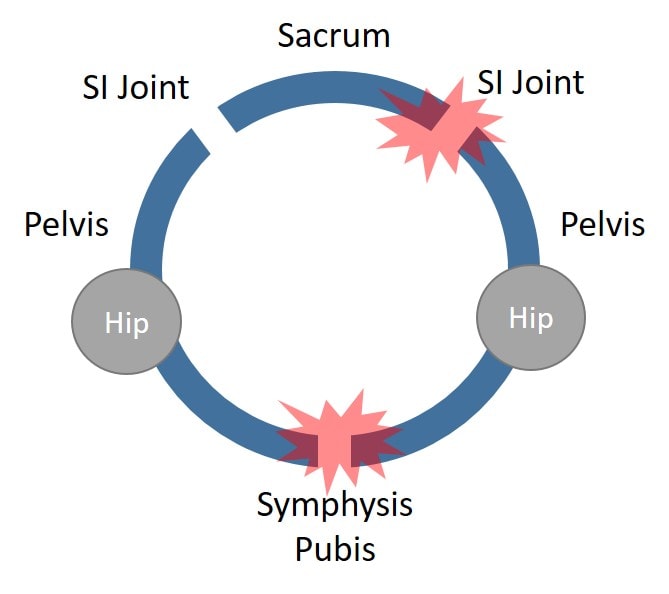
Note that the pelvic ring acts as one structure. For example, what impacts one SI joint in the back (the red star) also impacts the symphysis pubis joint in the front (the red star in front).
The symphysis pubis is a joint that’s built to give rather than to move like your knee or your shoulder. Hence, it has a fibrous disc where the two pubic bone parts of the pelvis meet:
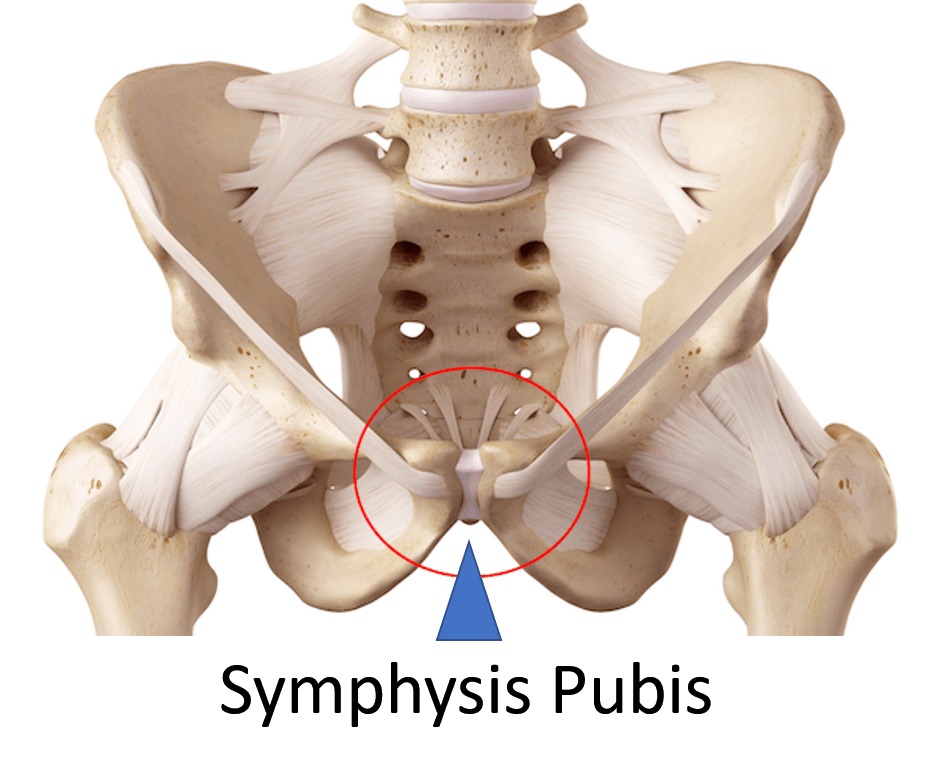
SciePro/Shutterstock
When this symphysis pubis joint gets too much force due to instability there or in the SI joints, the body’s response is to create bone here, causing a problem called osteitis pubis. Other names for this condition also include athletic pubalgia or a sports hernia.
What Are The Symptoms of Osteitis Pubis?
The symptoms of Osteitis Pubis are pain in the symphysis pubis. This is located at the front of the pelvis. The pain can radiate to the groin, lower abdomen, or inner thighs. This is because of the muscle attachments of the adductor and rectus abdominis (stomach). The pain can be one-sided or in the middle and may increase with activities. Things like kicking, pivoting on one leg, running, climbing stairs, hiking, lying on one side, and coughing may aggravate the pain.
Who Gets Osteitis Pubis?
This problem generally happens in athletes or rarely after bladder or pelvic surgery (2,3). It can also happen after delivering a baby. That can occur because the baby’s head is slightly bigger than the birth canal formed by the pelvic ring. In that situation, the SI joints and symphysis pubis can become stretched out and damaged to allow the baby to pass through.
What Is the Treatment for Osteitis Pubis?
Treatment is usually conservative and at first, involves rest and NSAID medications to see if the issue gets better on its own. If it doesn’t, physical therapy exercises to stabilize the pelvis or manipulation of the SI joints by a chiropractor or physical therapist may help. Steroid injections into the symphysis pubis are also used. Regrettably, while steroids can help inflammation, they also destroy local tissue. Surgery may be recommended if nothing else helps. This involves debriding the area (cutting out parts of the joint), resecting a bigger portion of the joint (wedge resection), resecting the whole joint (wide resection), or fusion (placing a screw or plate across the joint). Regrettably, all surgical options will damage the joint in one way or the other.
Is There a Way to Avoid Osteitis Pubis Surgery?
We’ve been treating pain at the symphysis pubis for many years without surgery. The advent of precise, image-guided orthobiologics allows us to tighten this loose and damaged area down, treat the associated tendons, and the rest of the pelvic ring including the SI joint. What are orthobiologics? See my video below:
Let’s go over a patient case so that you can see how all of this works.
The patient is a 30-year old Dentist who also runs endurance races at 100+ miles 3-6 times a year. About a year ago he was diagnosed with mild osteitis pubis. He had a blind (no imaging guidance) steroid injection into the symphysis pubis and ultimately felt better, so he went back to training. He then developed a sacral stress fracture (see image below), which could have been due to the steroid injection. How is that possible? Because we know that steroids weaken bones by killing off progenitor cells (5).
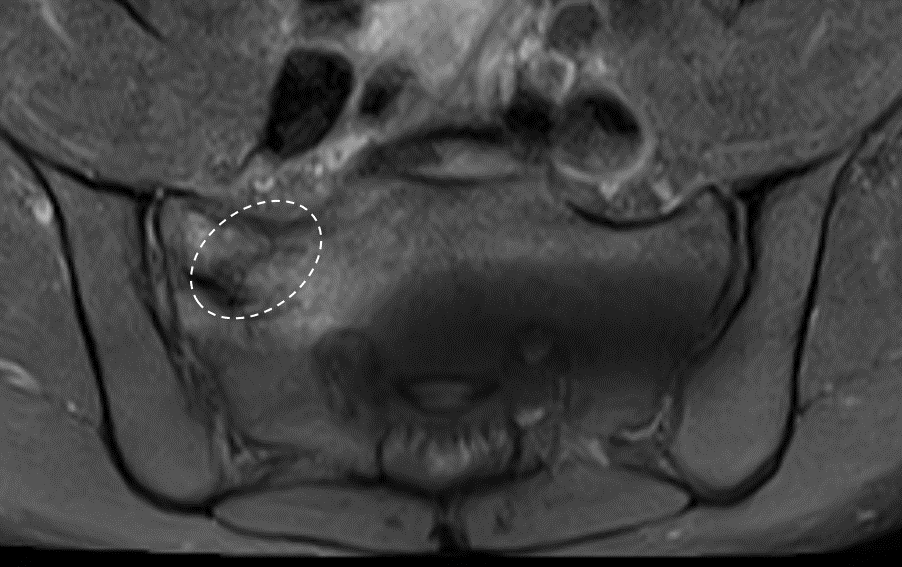
His options at that point included using orthobiologics to heal that fracture. In addition, loose ligaments at the SI joint were likely causing joint instability that probably helped cause the fracture by placing too much force on the sacrum. Hence orthobiologic injections also could have been used to tighten down the lax SI joints. However, the patient was seeing an orthopedic surgeon, so he instead got an SI joint fusion:
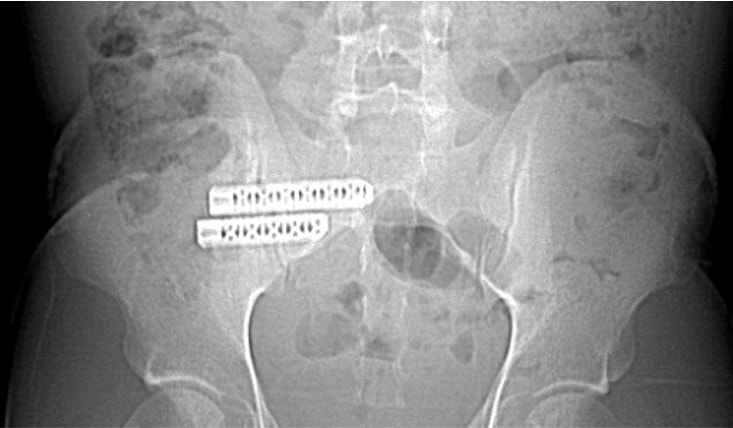
See the two large screws on the left? Those go through the SI joint and into the sacrum. The problem? That means this SI joint no longer moves, so all of that energy that would normally be absorbed by a mobile SI joint has to go somewhere. Where did it go? He went back to running at 2 months, so much of it went into his symphysis pubis, leading to severe and rapid onset osteitis pubis. This is what the x-ray and CT scan below shows. The normal space in the symphysis pubis where the fibrous disc lives is now gone and the bone is being eaten away:
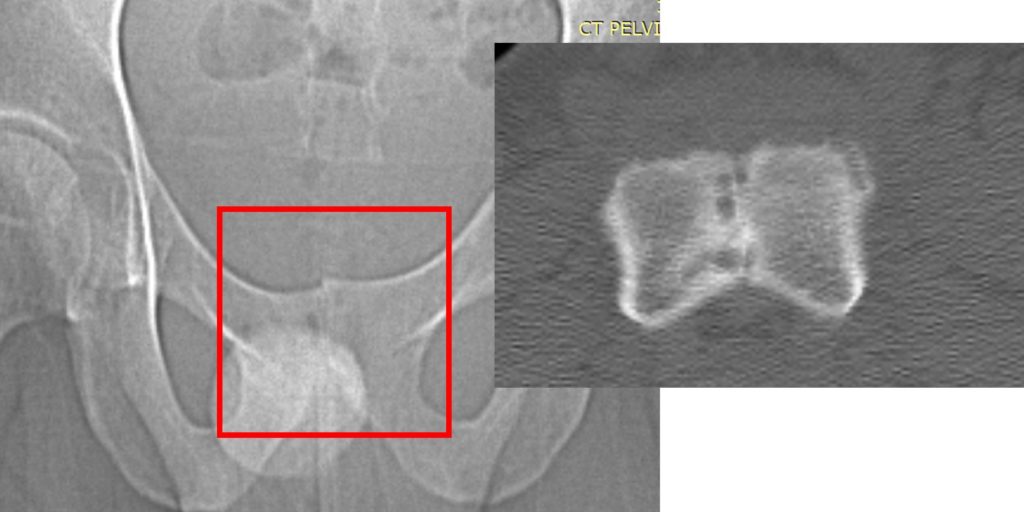
At this point, his option was yet another surgery, now to help the Osteitis Pubis caused by the first surgery. However, he sought out the help of Dr. Markle at our Regenexx HQ in Colorado who finally used orthobiologics on this worsening symphysis pubis joint. Below you will see the fluoroscopy images showing the patient’s own bone marrow concentrate injections into the surrounding deteriorating bone of the symphysis pubis and into the degenerated joint:
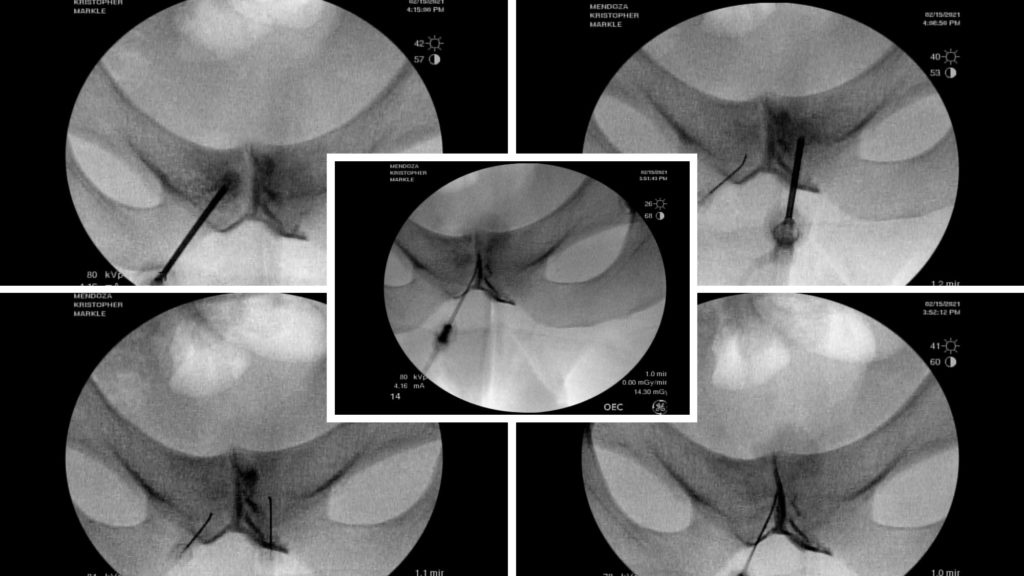
What happened? Here are the images a few months after treatment:
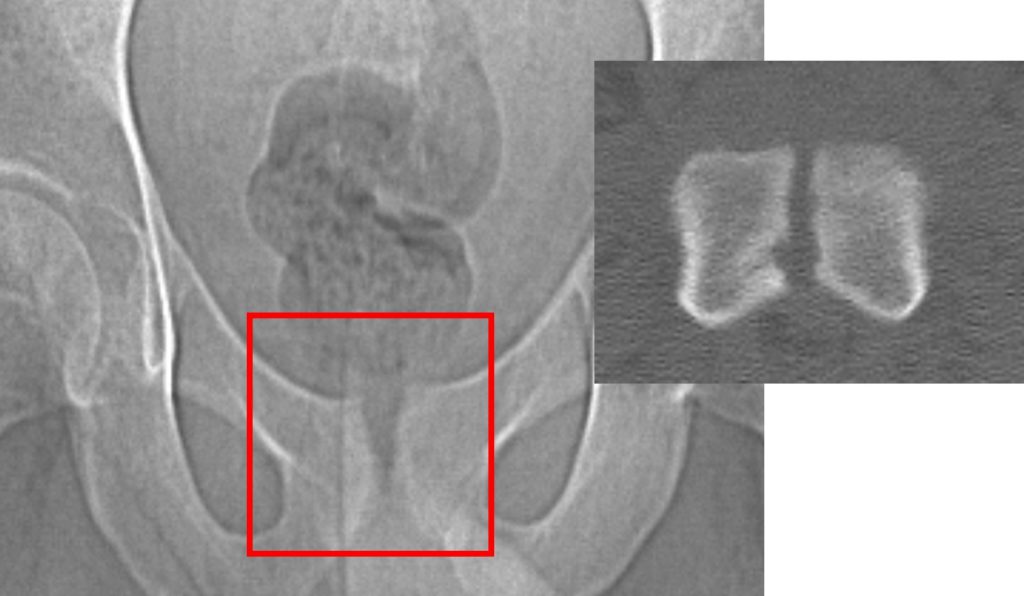
Now we see that there is a normal space in the symphysis pubis joint and the surrounding bone is healthy again. His symptoms are 80-90% gone with 0/10 pain daily.
In summary, we had a very active athlete who developed Osteitis Pubis who had a steroid shot that seemed to help, but then he developed a sacral stress fracture. The surgeon then placed screws across his SI joint, which made his Osteitis Pubis much worse and lead to the destruction of the symphysis pubis joint. Due to precise orthobiologic injections using imaging guidance by Dr. Markle, his degenerating joint and bone has objectively improved on imaging and he’s on the mend!
The upshot? Osteitis Pubis can be a real pain! However, understanding what it is and why it happens is key. In the meantime, we have been able to help many patients through the years by precise injection of the own platelets or bone marrow concentrate to help this problem heal rather than using invasive surgery.
________________________________________________
References:
(1) Becker I, Woodley SJ, Stringer MD. The adult human pubic symphysis: a systematic review. J Anat. 2010;217(5):475-487. doi:10.1111/j.1469-7580.2010.01300.x
(2) Gomella P, Mufarrij P. Osteitis pubis: A rare cause of suprapubic pain. Rev Urol. 2017;19(3):156-163. doi:10.3909/riu0767
(3) Choi H, McCartney M, Best TM. Treatment of osteitis pubis and osteomyelitis of the pubic symphysis in athletes: a systematic review. Br J Sports Med. 2011;45(1):57-64. doi:10.1136/bjsm.2008.050989
(4) Mehin R, Meek R, O’Brien P, Blachut P. Surgery for osteitis pubis. Can J Surg. 2006;49(3):170-176.
(5) Yoder K, Bartsokas J, Averell K, McBride E, Long C, Cook C. Risk factors associated with sacral stress fractures: a systematic review. J Man Manip Ther. 2015;23(2):84-92. doi:10.1179/2042618613Y.0000000055

If you have questions or comments about this blog post, please email us at [email protected]
NOTE: This blog post provides general information to help the reader better understand regenerative medicine, musculoskeletal health, and related subjects. All content provided in this blog, website, or any linked materials, including text, graphics, images, patient profiles, outcomes, and information, are not intended and should not be considered or used as a substitute for medical advice, diagnosis, or treatment. Please always consult with a professional and certified healthcare provider to discuss if a treatment is right for you.